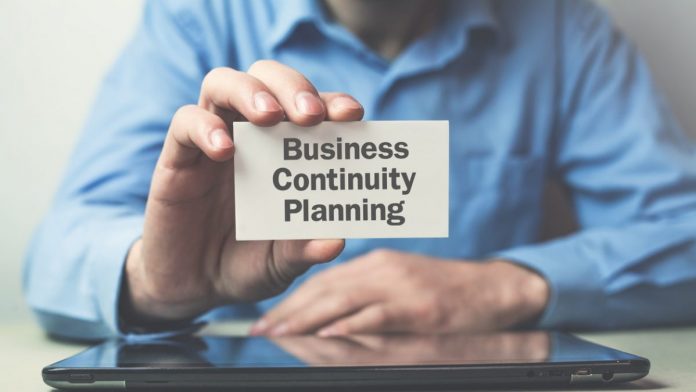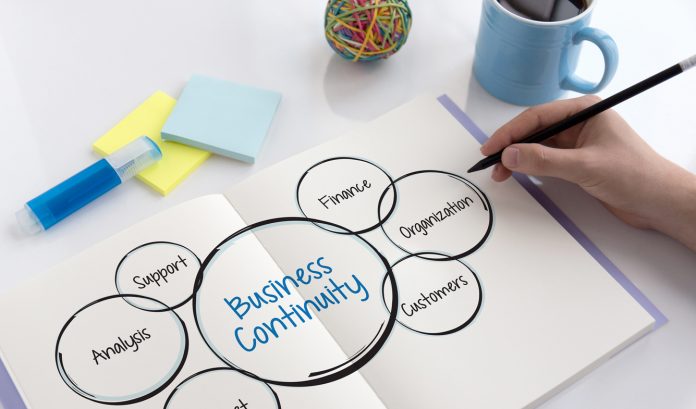How to Build the Best Business Continuity Offering XaaSjournal.com April 29th 2019
Planning, building your expertise, testing your solutions, and adapting them to change are vital to effective business continuity.
The William Travis Group, Inc.
The William Travis Group delivers Disaster Recovery, Business Continuity and All-Risk Incident Management methodologies and solutions.
William T. Bedsole, President
The ultimate goal of business continuity solutions is to enable a business to resume operations after a disaster or outage. Business continuity offerings include disaster recovery (DR) solutions to backup and restore data, but that’s not all it will take to help your clients respond and get up and running again when disaster strikes. They need a solid plan that includes emergency response, crisis communication, and litigation mitigation — whatever it takes to most effectively respond to a disaster and get back in business.
Bill Bedsole, president of The William Travis Group, says the best business continuity offerings “give a business the ability to respond to any event, anytime, anywhere, with or without key personnel.”
It’s All About The Plan
Effective business continuity solutions start with a needs assessment and a well-developed plan, but in practice, he sees many “plans” that are merely checklists. Moreover, some checklists may be distributed to different people with various responsibilities during an event, but there’s no coordination among them. “Business continuity plans need to be flexible,” Bedsole says. “People following checklists may not be in alignment with what other people are doing. Plans need to be based on if-this-then-that or if-not-this-then-not that.” Planning is also a broader undertaking than using business continuity software and solutions that restore data and IT infrastructure. The best business continuity solutions also include identifying critical business functions, planning and executing ways to manage them during an event, minimizing losses, and training your client’s team to respond effectively.
He adds that during his more than 30-year career developing and providing business continuity solutions, he says he’s only encountered a handful of companies that had adequate plans.
Get The Expertise You Need
To provide the best business continuity offering, you need expertise, either by adding dedicated resources to your staff or partnering with knowledgeable people in the industry. Because of the breadth of solutions and services that a comprehensive business continuity offering can include, Bedsole comments that few providers can offer a total solution without formal partnering.
Once you’ve built the team responsible for your business continuity offering, Bedsole advises working together to identify the top 25 must-have elements of your solution and then determining how you will provide those solutions that meet those needs, either directly or indirectly, to your clients.
Test Your Business Continuity Offering
Once you determine how you plan to provide business continuity, the next vital — yet often overlooked — step is to test it. Bedsole says to take the top 25 list and the solutions you developed and implement them at a friend’s company as a trial. If the solutions don’t work as intended, modify them, and then repeat the test.
“It’s something every business continuity provider should do, but very few have implemented,” Bedsole says.
Find The Perfect Provider-Client Responsibility Balance
When you begin working with a client, there may or may not be a person assigned to manage business continuity. It’s imperative, however, to identify who you will work with and determine what that person can handle internally and exactly what your MSP business’ role will be. This partnership can cover all the bases necessary for business continuity — technical expertise from the MSP and knowledge of the company’s operations and processes from the inside. The most important part of the company’s business continuity manager, however, says Bedsole, is garnering management support for the program.
Your Work Will Never Be Complete
Change is occurring faster and faster in your clients’ industries, so the final tip for building the best business continuity offering is to acknowledge that plans and solutions must be updated to meet constantly evolving needs.
If you don’t maintain your business continuity offering, it will become worthless. Bedsole says if you put a solution in place and don’t evaluate and updated it for 18 months, it’s probably better just to start over. “Anyone can gear up for one time,” Bedsole comments. “The real challenge is to gear up for the rest of your life.”
XaaS Journal
How to Build the Best Business Continuity Offering
April 29th 2019
By Mike Monocello
A business continuity strategy includes identifying critical operations, putting solutions in place to maintain those operations in the event of a natural disaster or outage, and monitoring and maintaining those solutions. Organizations can opt to outsource this planning and solutions monitoring to a Business Continuity as a Service (BCaaS) provider.
Why It Matters To Your Customers
When business disruption occurs due to a natural disaster, utility outage, or other cause, it creates a wide range of problems that can lead to significant financial losses. Obviously, when operations stop, so do production and sales, but an outage can also mean added costs of getting equipment back on line, paying overtime to get back on schedule, recovering lost data, and customer make-goods.
Natural disasters can’t be prevented and often strike with little warning, but they aren’t the only reasons operations can come to a halt. Network or utility outage, cyberattack, hardware failures, and human error can result in business disruptions that can be just as damaging to a business’s bottom line.
Why Business Continuity Is An Opportunity
Few would dispute the importance of business continuity, but business may not have the in-house resources to manage it. You may encounter clients who instead have adopted a “head in the sand” position, deciding that the odds are against disaster striking. By offering a managed, budget-friendly Business Continuity as a Service solution, you can provide these businesses with a way to ensure operations can continue without putting a burden on in-house resources.
Design total solutions that begin by identifying critical operations and performing a risk analysis. Then, identify solutions that can ensure production and processes can continue and monitor operations and business continuity solutions to ensure everything remains operational. BCaaS is more than just backup and disaster recovery (BDR), although that is a vital part of a business continuity plan. The plan may also include cellular failover routers that enable communications and internet access when the network is unavailable and uninterruptible power supplies that provide emergency power when there is an outage. To provide your client with the best solution, you need a thorough understanding on the inner workings of their operations—which may reveal additional opportunities for solutions or services you can provide.







